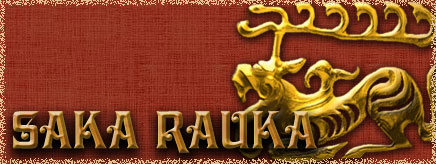And eastern populations commonly used the Kopis as well as the Akinakes. I should also point out that the Kopis/Makhairia was much closer in intent and use to a mace or axe than to the Gladius.
This is a professional military we are talking about here, not some militia, they fought in what ever manner suited the Romans, not themselves. If a local tradition was beneficial to the Romans they would be formed into specialist Auxilia units based around that tradition (eg Numdian Cavalry, Cretan Archers etc), if not and if they were still needed they would be trained in Roman fighting styles.No, I'm not speaking of the learning process, but of the training one: an unknown skill, without the help from someone who already mastered it, takes quite some time of "try and fail"...
While teaching whole communities, requires time and willingness from those communities, which if asked to fight, should they possess a rooted tradition would prefer to bring their arms...
While there was a need for natives to set the ball rolling, once the tradition was established in the military the Romans didn't need to access to those same natives to continue it, they could also export it to other areas as they saw fit. They may have continued to do so in a lot of circumstances because the natives were usually the best, but that does not mean it was impossible to train others.You are not understanding what I'm saying, I have no problem with that assumption, what I'm talking about is the use of mounted archers and armour clad cavalry (in this very case), put in use by hiring locals, at first and in the most imminent time, while later it was about those very communities, to settle and train in such fashion people...
Sometimes yes, but you are implying that it was all the time.In overall, for ancient peoples, blood and traditions could sometimes transcend reason in decisions...
My point is they didn't get to decided how they fought in the legions! It's not like on the first day of legionary training Antigonos the Makedone said "Actually nice Mr Centurion I think I'll stick to my Sarissa thank you very much, I just can't get my head around your way of doing things....so how much do we get paid again?"In something as characteristic as warfare, unless people made the decision to do so, or they were already accustomed to similar styles, the imposition of other's ideas was, I dare say, impossible...








 Reply With Quote
Reply With Quote





Bookmarks